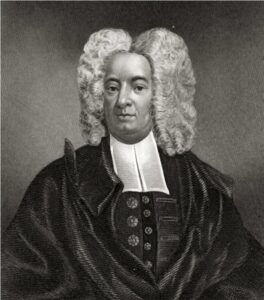November 16, 2018, marks the 330th anniversary of one of the great travesties of American history. On that date in 1688, the citizens of Boston executed Ann “Goody” Glover for being a witch. The tragedy of the event is compounded by the story being little remembered despite its echoes in the events of today and the lessons it could teach.

Not much is known about Ann’s early life. She was born in Ireland where she and her husband were transported to Barbados and sold into servitude as part of Oliver Cromwell’s anti-Catholic pogroms. At some point during his bondage Ann’s husband died, some sources stating that his death was a result of his refusal to renounce his Catholic faith. By 1680, Ann and her daughter Mary had made it to the Massachusetts Bay Colony, at the time a Puritan dominion where Catholics were treated with suspicion and disdain. Ann and her daughter were employed as servants in the home of John Goodwin.
Trouble began for Ann when in the summer of 1688 the 13-year-old daughter of John Goodwin, Martha, accused Ann’s daughter of stealing linen from the home. This led to a heated confrontation between Ann Glover and the child. Not long after this exchange the Goodwin children became ill. The doctor concluded “nothing but a hellish Witchcraft could be the Origin of these maladies” as he could offer no other explanation for the illness. It was a convenient diagnosis for a doctor that had no idea what was causing the childrens illness. Recalling the earlier argument with the Goodwin daughter, suspicion immediately fell onto Ann and she was arrested on a charge of witchcraft.

Chief among Glover’s accusers was the leading minister of the colony, Cotton Mather. We can gain insight into the climate of justice Ann Glover faced when Mather described her as “a scandalous old Irishwoman, very poor, a Roman Catholic and obstinate in idolatry.“ In his writing on the trail Mather contradicts himself when he states that when asked if she believed in God, Glover’s response was (conveniently) “ too blasphemous and horrible for any Pen of mine to mention”, but then states later “(Glover) was brought upon her Tryal; at which, thro’ the Efficacy of a Charm, I suppose, used upon her, by one or some of her Cruel the Court could receive Answers from her in one but the Irish”. In other words, Ann had lost whatever ability she had to speak English (which raises the question of how then was she able to utter a response, in English “too blasphemous and horrible for any Pen“?). We can safely assume that if Ann was transported to Barbados in the 1650’s that in 1688 she was of advanced years especially for her time. There are documented cases today where older people suffering from dementia lose the ability to speak an adopted language and can speak solely their original tongue. Ann’s subsequent testimony would therefore be “convey’d by two honest and faithful men that were interpreters.” One has reason to wonder if more emphasis was placed on them being “faithful” to Puritanism (and Mather) than to the accuracy of their translations.
The chief evidence against Ann was that she could not recite the “Our Father” in English. Mather reported that “(Ann) own’d her self a Roman Catholick; and could recite her Pater Noster (“Our Father”) in Latin very readily; but there was one Clause or two alwaies too hard for her”. It must be remembered that the protestant version of “Our Father” contains the doxology, “For thine is the kingdom, and the power, and the glory now and forever”; Ann as a Catholic would not have naturally recited that “one Clause” and this would condemn her.
Ann’s also made admissions (in Irish) to talking to “spirits”, and this too would weigh against her. However, Cotton Mather himself noted “They were her Spirits, or her Saints, (for they say, the same Word in Irish signifies both)”. Ann’s alleged admission of communing with Spirits may have been simply her Catholic practice of invoking the intercession of Saints (and Mather seems to know this). In short, the evidence for Ann being a witch was rooted primarily in her being Irish and a Roman Catholic.

On November 16, 1688 Ann “Goody” Glover was hung. She protested that her death would do the children no good as she had not been the one to afflict them (and she was right, the children continued to show symptoms of their affliction for several weeks after her death). A local Boston merchant, Robert Calef, who observed the proceedings summarized “Goody Glover was a despised, crazy, poor old woman, an Irish Catholic who was tried for afflicting the Goodwin children. Her behavior at her trial was like that of one distracted. They did her cruel. The proof against her was wholly deficient. The jury brought her guilty. She was hung. She died a Catholic“. Glover’s body was left hanging “as a warning”.
The death of “Goody” Glover should have lessons for all Americans of all heritages of the perils to justice when the need for establishing guilt beyond reasonable doubt gives way to the baying of ignorance and prejudice. Remarkably, some revisionists today despite the clear evidence of Cotton Mather’s own words attempt to claim that there was no anti-Irish or anti-Catholic bias in the proceedings against Ann Glover; their “logic” and motivation for trying to airbrush and sanitize the grave injustice behind her death are open to question. Certainly there is more evidence that Ann Glover was the victim of prejudice concerning her Irish ethnicity, language and Catholic faith than anything she was convicted on.
